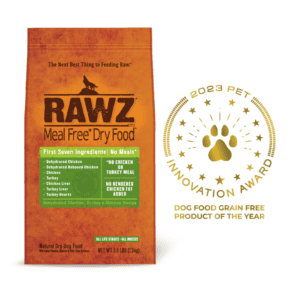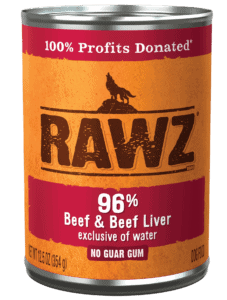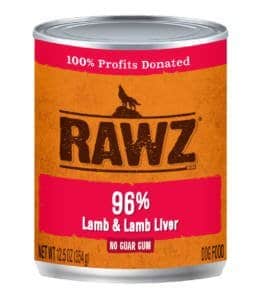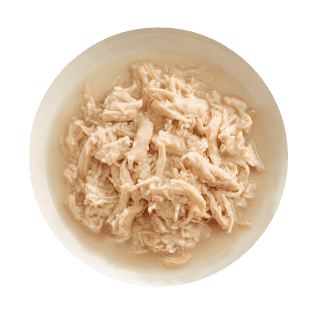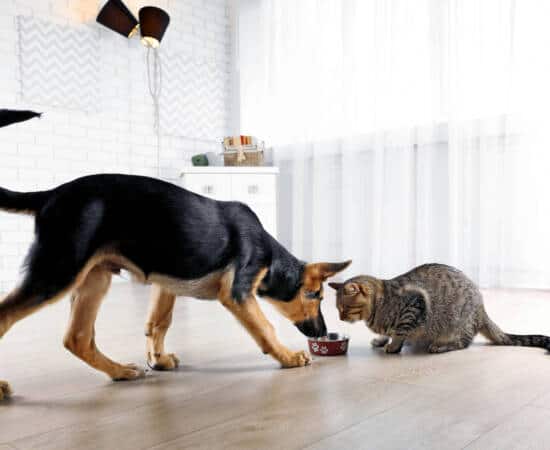How Much Should I Feed My Puppy?
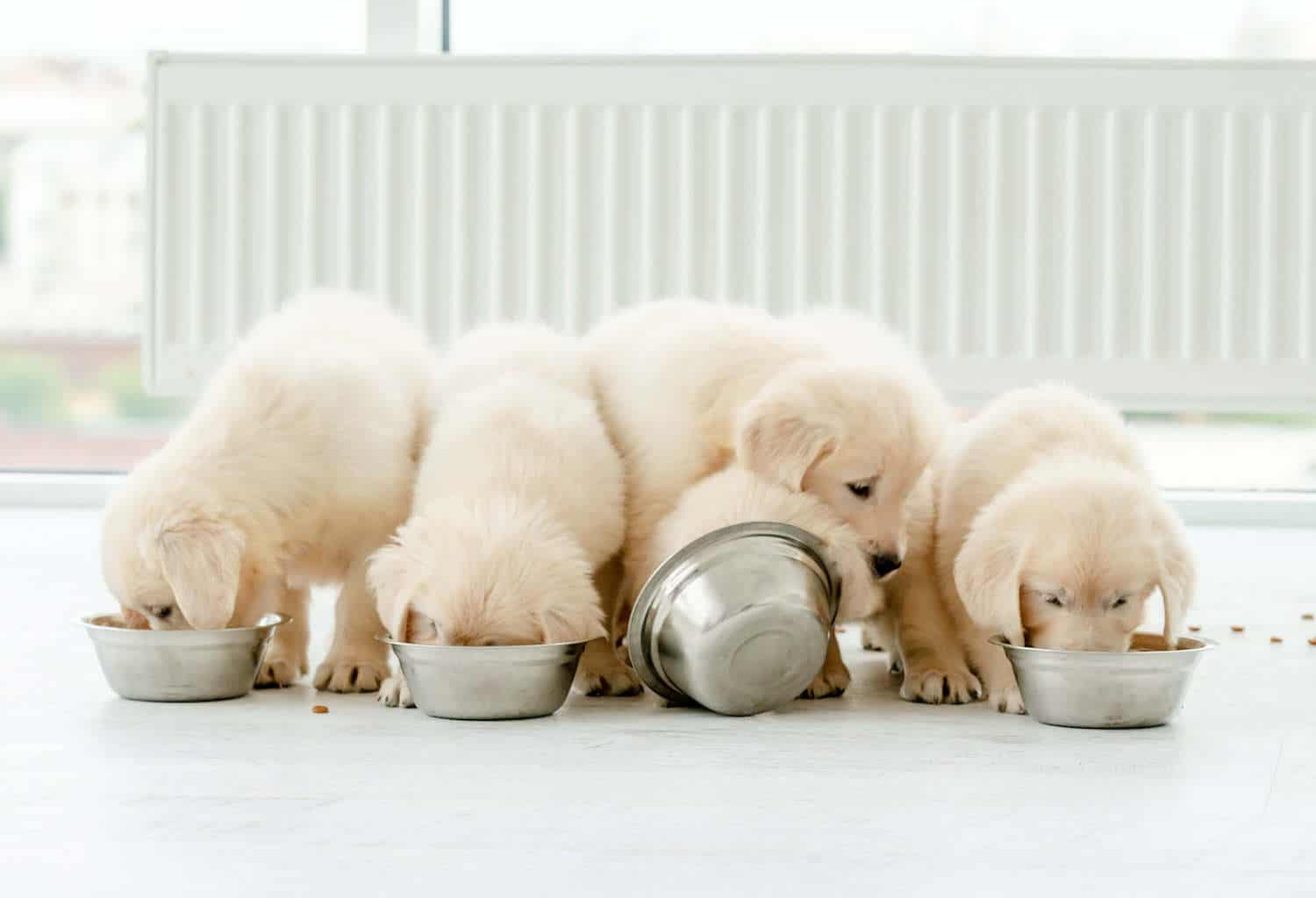
Getting a new puppy is exciting, but a big responsibility. New dog parents want to make sure that they are doing everything they can to keep their puppy healthy, and diet plays a primary role. Knowing when, how much and how often to feed a new puppy is key to helping them maintain a healthy lifestyle.
Puppies start by getting nutrients from their mother’s milk or a liquid formula. It’s important not to switch to dry or solid food too soon, as that could cause the puppy to experience gastrointestinal issues. Read on to learn more about feeding your puppy.
How Much to Feed a Puppy
Just like every puppy is unique, so are their nutritional needs. Food intake differs according to size, breed and energy level. For example, a 6-month-old chihuahua pup won’t need as much food as a 6-month-old golden retriever. Here is a timeline for how much to feed your puppy from 6 weeks to one year old:
- 6–12 weeks: At this age, feed your puppy four times a day.
- 3–6 months: During this period, you can decrease feedings to three times a day.
- 6–12 months: Older puppies should eat twice a day. Small breeds can make the switch from three to two feedings a day at 7 to 9 months; bigger breeds at 12 to 14 months. When in doubt, it’s better to continue feeding puppy food past the recommended stopping point than stopping too soon.
- One year and over: It’s common to feed dogs aged one year and over two half-portions a day.
Puppy Feeding Factors
There are a variety of factors that will affect how much or what you should feed your puppy. These factors include but aren’t limited to:
- Activity level: Active and highly energetic puppies may require more food or additional feedings.
- Age: A puppy’s age dictates the amount of nutrients that it needs. Since puppies grow quickly, this amount will change often.
- Breed/size: Larger breed puppy food may contain lower fat levels to help keep growth at a healthy pace. Smaller breed puppy food may contain more protein for steady growth.
- Medical conditions: If your puppy has a sensitive stomach or food allergies, they may need to be fed a special diet.
When Should You Move on From Puppy Food?
Move on from feeding puppy food once your puppy has reached 90% of their expected adult weight. For small breeds, this will be between 9 and 12 months; and for large breeds, 12 to 18 months. It’s important to transition to adult food because nutrient needs will change as the dog grows. If your puppy is eating an Association of American Feed Control Officials (AFFCO) certified “all life stages” food, like RAWZ, there is no need to change or transition foods. Foods classified as “all life stages” fulfill the nutrient content to fully support the four stages of life.
Puppies should be weaned off puppy food gradually to help prevent an upset stomach. Here is a sample transition plan:
- Days 1 and 2: Feed your dog 3/4 of the typical amount of puppy food and add 1/4 adult dog food.
- Days 3 and 4: Serve half puppy food and half adult dog food.
- Days 5 to 7: Feed 1/4 puppy food and 3/4 adult dog food.
- Days 8 to 10 (and beyond): Serve only adult dog food.
How to Wean Your Puppy to Solid Foods
When your puppy is around four to six weeks old, they will no longer get enough calories from their mother’s milk. This is the time to start transitioning them to solid puppy foods. Like the transition from puppy to adult food, weaning your puppy to solid foods should be a gradual process. Start by making a “gruel” – a mix of puppy food and puppy milk replacer or water. Start with a larger ratio of liquid to solids, then gradually reduce the amount of liquid until the puppy is eating only solid food.
What Does a Healthy Puppy Look Like?
While puppies can’t physically speak to us, we can infer from their appearance and behavior that they are healthy. Your puppy should be playful and energetic and want to be around you. If your puppy is showing signs of illness or excessive stress, you may want to consult a veterinarian.
Signs of a healthy puppy include:
- Bright, clean eyes
- Clear ears and nose
- Slightly moist nose
- Shiny and full coat
Foods to Avoid
It’s best to avoid dog food brands that list corn or meat byproducts as first ingredients. These are fillers and provide little to no nutritional value for your puppy. Avoid artificial colors or flavorings and artificial preservatives like propylene glycol or BHT. In general, minimize human food (no more than 10% of daily intake) and avoid scraps or potentially toxic foods including bacon grease and fats, onions, chocolate, grapes or cooked bones.
What Fruits & Vegetables can dogs eat >
How to Manage Your Puppy’s Treat Intake
Limiting your puppy’s treat intake is important for many reasons. First, treats don’t have as much nutritional value as food, so you don’t want your puppy to fill up on empty calories. Second, it sets a bad precedent and can increase your puppy’s begging habits. A healthy alternative to treat training is to use puppy food as training rewards. Remember, not all meals have to be eaten from a bowl.
Charting Your Puppy’s Weight and Growth
It’s important to keep track of your puppy’s weight since it is an indicator of health. If a puppy is underweight, they may not be eating enough or getting the right nutrients. If they are overweight, there is extra stress on their joints, which could lead to health problems. A trick to weighing an energetic puppy is to weigh yourself and then weigh yourself holding the puppy. Subtract your own weight and you have your puppy’s weight! Here’s a sample growth chart you can use to track your puppy’s progress:
| Age (in months) | Weight (in pounds) |
| 0 | |
| 2 | |
| 4 | |
| 6 | |
| 8 | |
| 10 | |
| 12 | |
| 14 | |
| 16 | |
| 18 | |
| 20 | |
| 22 | |
| 24 |
Puppy Feeding Tips
Feed your puppy on a schedule and try not to stray too much from it. Start implementing good habits and discouraging bad habits, like begging for table scraps. Don’t give your puppy food scraps while cooking. If you have a young child, do your best to make sure they aren’t feeding the puppy extra treats or food from their own plate.
If your puppy is eating too fast, you can try a slow feeder or a food dispensing toy. This will help your puppy eat slower, provide mental stimulation and work off some of that never-ending puppy energy. You can also stuff plastic toys with high-quality canned food and freeze them to provide interactive and nutritional fun. If you’re changing your puppy’s food, be sure to do so gradually to reduce any chance of gastrointestinal discomfort. It’s also extremely important for puppies to have constant access to clean, fresh water. Like humans, staying hydrated is imperative to a dog’s health. If you have any questions about feeding your puppy, consult a nutrition-focused veterinarian.
How to Select High Quality Puppy Food
For your puppy to grow strong and healthy, feed them the highest quality puppy food. This means feeding your puppy a minimally processed, high-nutrient food diet that meets the AFFCO criteria for the dog “growth” or “all life stages”. Foods classified as “all life stages” are compatible with puppies and can help the healthy growth of large breed dogs. Puppy food contains an appropriate balance of proteins, carbohydrates, fats, vitamins and minerals that provide optimal nutrition. At RAWZ, we know that your puppy is part of the family, and we are proud to provide high quality dog food to help keep them healthy.
